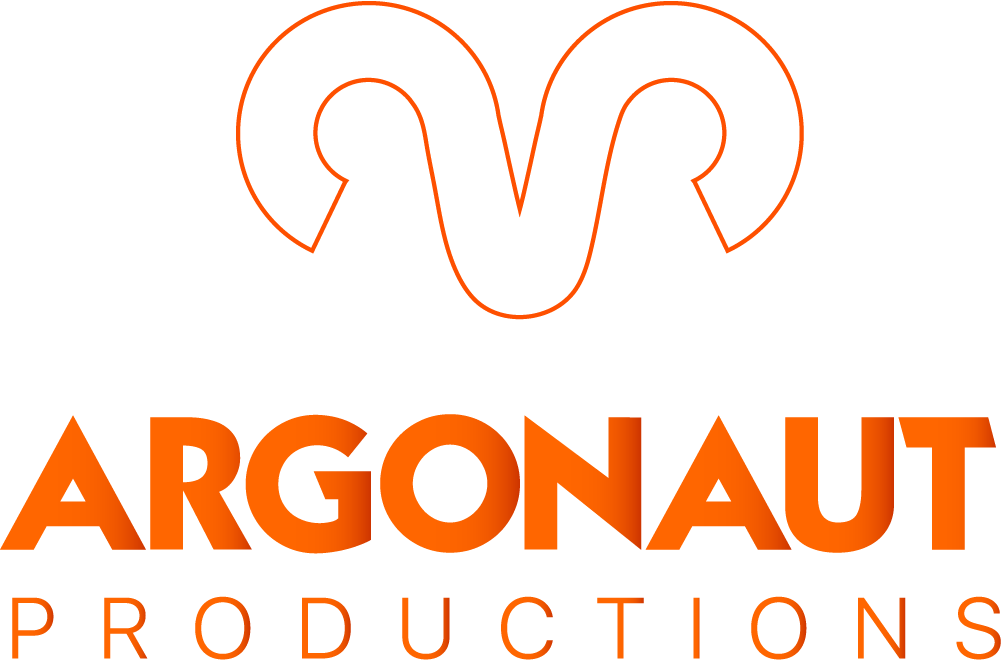Using Impact Videos to Boost Nonprofit Fundraising
Using Impact Videos to Boost Nonprofit Fundraising
You’ve probably heard the old saying: “seeing is believing”. As visual storytellers, we put a lot of faith in that saying. We think that you should too. Making video and visuals a big part of your organization’s messaging can boost the impact of your marketing program. But why stop there? Why not use video to tell a story that lets audiences know how big an impact you’re making?
Impact videos are a way for nonprofit organizations and mission-driven corporations to turn performance data into compelling narratives. Using video to breathe life into the numbers that show you’re getting the job done strikes an emotional chord with audiences ranging from the Board of Directors to small-dollar donors. Don’t tell them you made an impact—show them!
Video marketing is the most powerful and popular tool in your development team’s box. It gives you versatile content that can be used on everything from social media posts to the program for your annual gala. When you combine video with the story hidden inside the numbers that prove you’re making an impact, the result is a message with the power to transform audiences into supporters and donors.
What Is Impact and Why Does It Matter?
Fundraising is the lifeblood of every nonprofit organization. There are a lot of different strategies that charities and foundations pursue to secure the funding they need to do the work they’re dedicated to. Whether you focus on grants, major donors, or even crowdfunding—you’re appeals are more effective when you can show your supporters the impact they make with their donation.
Do You Make An Impact?
In the broadest terms, impact is simply the amount of influence that one thing has on the current state of something else. If your nonprofit provides direct services then you can measure the before and after to show individual impact. But the impact that your supporters want to see is “social impact” and that’s where measuring can get complicated and messaging matters the most.
Can You Prove It?
When you show social impact, you demonstrate that what you do is moving the needle on a pressing social challenge. So, how do you define social impact? How do you measure it? What do you do with the data? How do you package and present it to audiences to secure new supporters and strengthen existing relationships?
What impact means for your organization will depend on the programs you offer, the recipients of your services, and the specific social challenge you’re trying to improve through the work you do. It can be a challenge to design processes to measure your impact but it’s worth the effort. It not only helps your organization get better it shows supporters their donations make a difference.
How To Measure Impact
If you’re just getting started or you’re thinking about measuring impact for the first time, it’s a good idea to start with the basics. The Common Approach grew out of the Ontario Provincial Government’s desire to come up with a flexible approach that would work for everyone but provide a better alternative to “anything goes”.
Common Foundations is the most basic platform for measuring impact to come out of the Common Approach. It provides “Five Essential Practices”, or the “how” of impact measurement.
Plan the change: What do you want to accomplish? What will you do to make that happen?
Use performance measure: How are you doing with the “doing”? Are the actions and activities you planned accomplishing the goals you set?
Collect relevant information: Does the data you collect answer the questions you need to ask about performance?
Gauge performance and impact: What’s the story that your data tells? What is working? What are the limitations? What insights does that data contain?
Report on results: What do your audiences need to know about the program’s performance? What did you learn to help you do better?
How Do Foundations Ensure Evaluations Measure True Impact?
If grants play any part in your organization’s development and fundraising strategy, you’re already familiar with the idea of reporting requirements, and you probably start thinking about how to measure and demonstrate impact early in the idea phase of a new program.
The Chronicle of Philanthropy has pointed out the importance of giving impact monitoring its due. They note that it’s a good way to refine the processes that make up a program and get better over time. They acknowledge the challenge and cost of effective monitoring. They also show the benefit of developing evaluations that answer the kinds of questions that foundations are likely to ask.
They offer the following tips for gauging whether your program is actually making an impact.
Design and plan the evaluation at the same time you develop the program.
Ensure timely evaluations so those insights get factored into future programming decisions.
Find the middle ground between basic monitoring and evaluation by specialists.
Escape from quantitative data. Use case studies, focus groups, testimonials, and more to tell the story.
The denominator shows how much work still needs to be done.
What Makes Measuring Social Impact A Challenge and Why Is It So Important?
The folks over at Donorbox agree that it is important for nonprofits to demonstrate impact to their donors and funders. But they know how imposing the challenge of setting up and running impact monitoring can be. So, they offer some useful advice to add to the tips we’ve already discussed.
They point to seven things that make measuring social impact a challenge.
It includes measuring complex concepts.
It means accounting for other factors that have influenced the outcome.
It’s a long-term commitment and requires consistent and dedicated work.
It requires a relevant framework and robust tools.
Even large and well-established nonprofits struggle with evaluation.
There are no set rules.
What “social impact” means is always vague and often misused.
But they also highlight 5 factors that help understand why measuring social impact is worth the effort.
You gather data and stories that you can use in your marketing and communications.
You get quantitative and qualitative feedback on your programs so you can improve them.
You get the ability to report back to funders and be accountable for your results.
You get a valuable resource for attracting new donors.
You can share your information with other organizations and collaborate.
All of these sources agree. It takes work to monitor the impact of your programs. But the work pays off in numerous ways. It helps you secure funding through foundations and donors. It helps you refine programs so that they work better and more efficiently. And it even gives you the basics of a great story to tell and multiple approaches to telling it.
When you use video to tell that story, you’ll get results that amplify your mission.
Using Nonprofit Videos to Show Impact
Maybe your organization tracks and evaluates program impact because you have to. Grantmakers and Boards of Directors often require impact reports to make oversight and ongoing support work. Maybe your organization measures impact just because it’s the right thing to do. It gives you the information you need to show donor appreciation and improve program delivery.
No matter why you do the work of measuring impact, it makes sense to put the results of your efforts to work for you. Communicating impact is an opportunity that too many organizations overlook. They see the numbers, charts, and graphs and think that nobody would want to slog through all of that information.
Like the old song says: “There’s Gold in Them Thar Hills”. But to get the gold you’ve got to do some digging. Your impact reports are no different. There are stories in those numbers. If you do the digging to get to them, you’ll find that they’re worth their weight in gold to your organization’s messaging and marketing campaigns.
How do you breathe life and energy into those numbers? Start by thinking about your organization’s audiences and the platforms you use to communicate. Then focus on crafting stories that fit each platform and serve each audience.
Every Nonprofit Video Should Serve An Audience
The wholesale embrace of storytelling in marketing circles is a relatively recent trend. But the writers and strategists who specialize in fundraising within the nonprofit sector have always known that an anecdote paints a mental picture and a picture is worth a thousand words. It’s important to keep this in mind when you’re thinking about the audience that you’re telling the story.
A Corporate Foundation will be most interested in the social impact of your program. Your Board of Directors will want to know the relationship between individual programs and the overarching mission. Your donors and supporters will want to know that they helped to make a difference and what they can do to amplify the good.
Impact videos allow you to SHOW and TELL. What have they accomplished with their grant, their guidance, their donation? What difference has it made to the community? What’s next—because there’s almost always more work to be done.
Video Marketing For Social Media and More
Your impact report gives you stories to tell. So, how do you turn it into great video content that will create awareness and inspire action? The first thing that you need to consider is where you’re going to post your video and what that means for viewer behavior and video format.
MobileCause and HubSpot have put together a helpful guide to show the optimum length of a video for each of the major social media platforms.
As a general guideline, shoot for the following:
· Instagram = 30 seconds
· Twitter = 45 seconds
· Facebook = 1 minute
· YouTube = 2 minutes
If your organization uses Donor Management Software, you will have a pretty good idea of who your videos will reach on each platform. Combine that insight with the awareness that each audience wants to hear your story in a specific way and you’ve got a roadmap to successful video storytelling.
The Goal: The Right Message in the Right Place at the Right Time
The goal of every nonprofit video is to grow the audience, inspire viewers to take action, and show donors that their support makes a difference that matters. A video that turns an impact report into a story that the audience wants to hear is just one more way to get there.
The folks at UpMedia point out that when it comes to the things that donors most want to see—“Results” is at the top of the list.
On a similar note, Dan Paskins of Big Lottery Fund told The Guardian that when it comes to making decisions about who should receive a grant award: “It is so valuable to be able to distill your impact down to a single story that people can remember, and tell”.
If you do the work to measure impact, it just makes sense to do a bit more and turn those insights into compelling videos that deliver what an audience wants to see and hear. With the videos in hand, your organization can put them to work on social media, at gala dinners, within required reports, and more. Let the video medium turn abstract numbers and boring charts into a real engagement.
Do Impact Videos Really Increase Support?
We’ve been talking about how important it is for your organization to show the impact of what you do. It’s only fair for you to expect us to show you some proof that turning impact reports into video marketing content will result in more awareness, increased engagement, better fundraising results, and more.
In an article for FastCompany, Ariel Schwartz points out that “online video is the most influential source in driving donations”. Combine that with UpMedia’s observation that donors want to see results, and you get a solid case for creating impact videos.
But maybe you’re still thinking that an impact video is:
· Too Expensive
· Too Much Work
· Too Risky
These misconceptions are too common. They keep great organizations from taking advantage of what an impact video can bring to the table for any nonprofit marketing strategy.
Tatiana Morand took to the Wild Apricot blog to dispel the four most common myths about nonprofit videos.
1. Video Marketing Is Too Expensive
You don’t have to have an expensive camera to shoot a video. If you have the budget to leave the shooting to a professional videographer or agency, that’s great. But if you have a phone, you have a camera. A great story can make up for a lot of production value is your biggest challenge.
Your team can connect with your audience by getting the emotional part of storytelling right. If you do that then slick production is just icing on the cake.
2. Nobody Wants To Watch Nonprofit Videos
There’s plenty of evidence to refute this common misconception. Studies show that video content will boost audience engagement with your website and social media accounts. YouTube is second only to Google in terms of daily traffic.
The way to make sure your impact videos engage audiences, connect through emotional resonance, and inspire action is to focus on the storytelling.
3. Nonprofit Videos Take Too Much Time and Work
You might think that the only way to get an impact video worth having is to go all-in on a big production. That’s one way to get it done but many nonprofits struggle to find the budget to make it happen that way.
When you think of your impact report as the foundation for the story you want to tell and video as the way you’re going to tell that story, a world of options opens up. That makes it easy for your team to find a way to do what you can with the resources you’ve got and still get results that boost your long-term goals.
4. We Won’t Get Enough Use Out of a Nonprofit Video
Nothing could be further from the truth! Video content is one of the most versatile assets your marketing team can use to engage with audiences. From Facebook and YouTube to your organization’s website and blog. The stories that are hidden inside your impact report can become the basis of an entire campaign that inspires your community to take action across multiple channels and platforms.
The key to getting more use out of your nonprofit video projects is to think about all of the ways you can tell the story that connects your audience to your organization through the impact that your mission has.
Argonaut Productions Will Help Plan and Execute Your Impact Video
If you’re not used to having video marketing in the mix for your awareness-raising and fundraising campaigns, getting started can be a bit overwhelming. We’re here to help your organization navigate the terrain between where you are and where you want to be.
Our process moves from initial consultation to a discovery session that results in a project roadmap.
If you’re trying to make the most of a tight budget, the project roadmap gives you expert advice on how to get it done with what you have.
If you have a bigger budget to work with, we can handle production and promotion to take the guesswork out of getting the results you want and need.

















